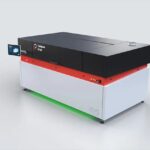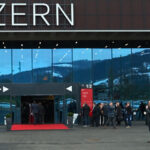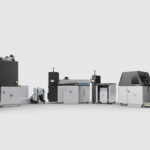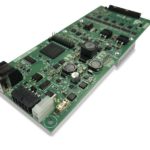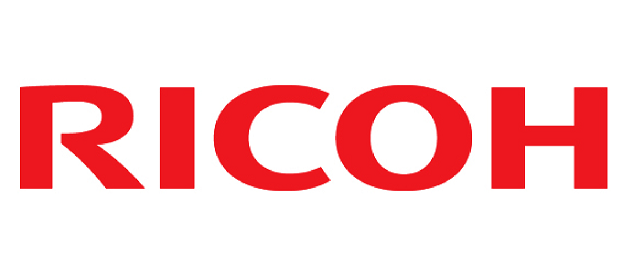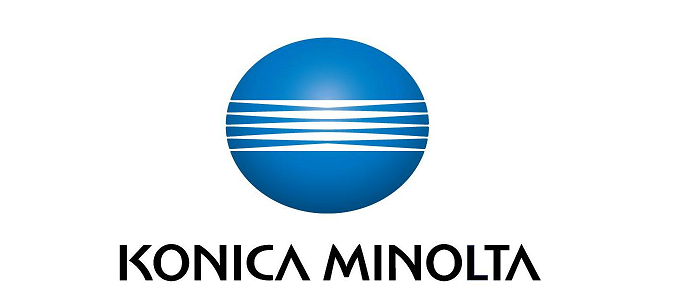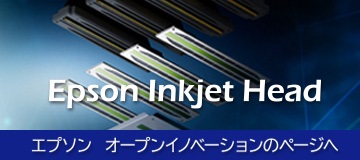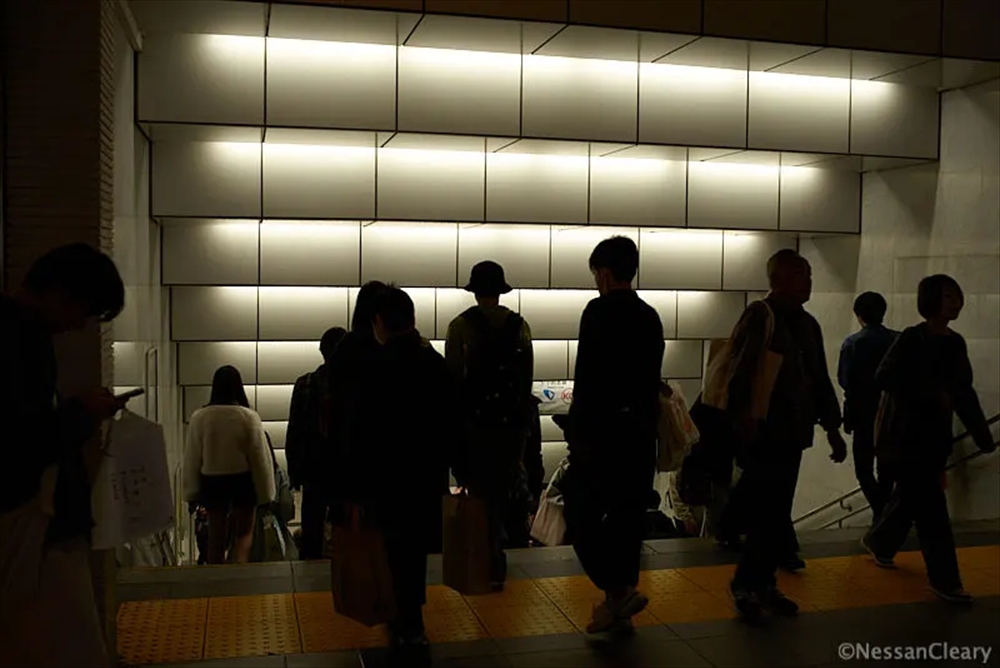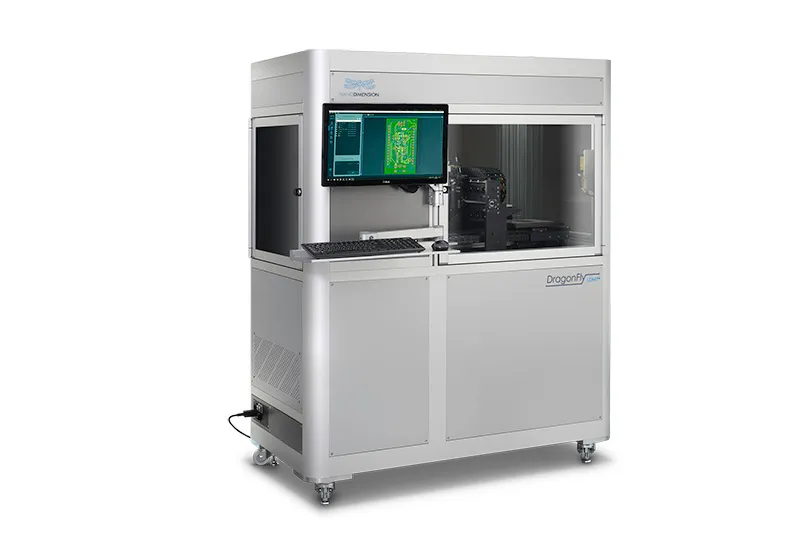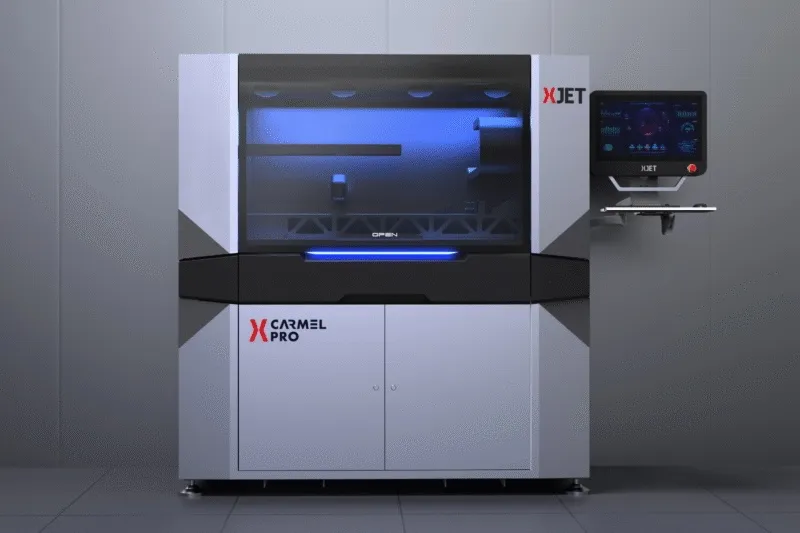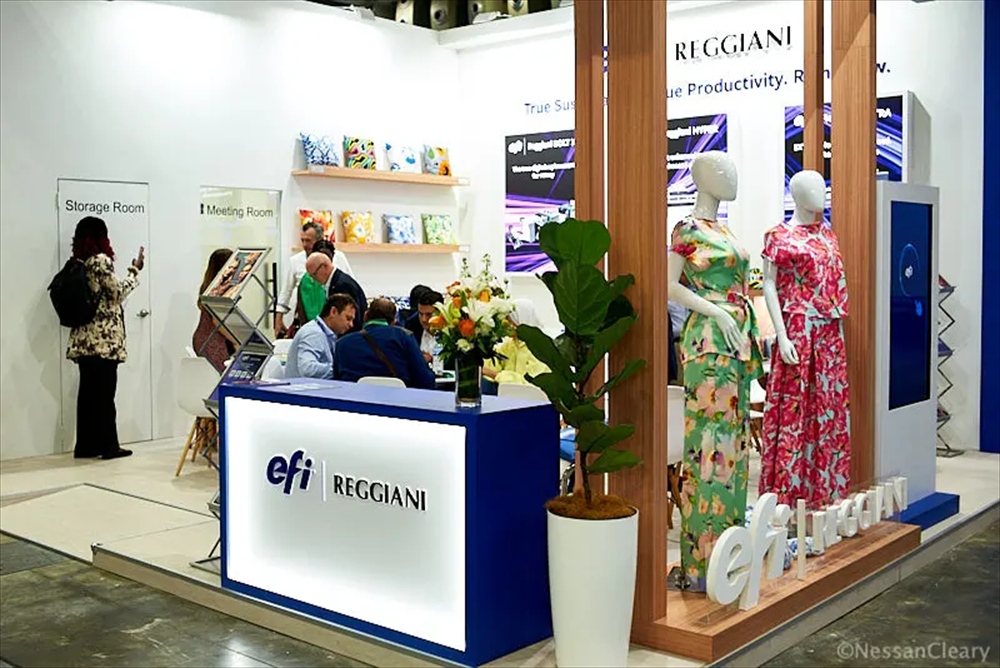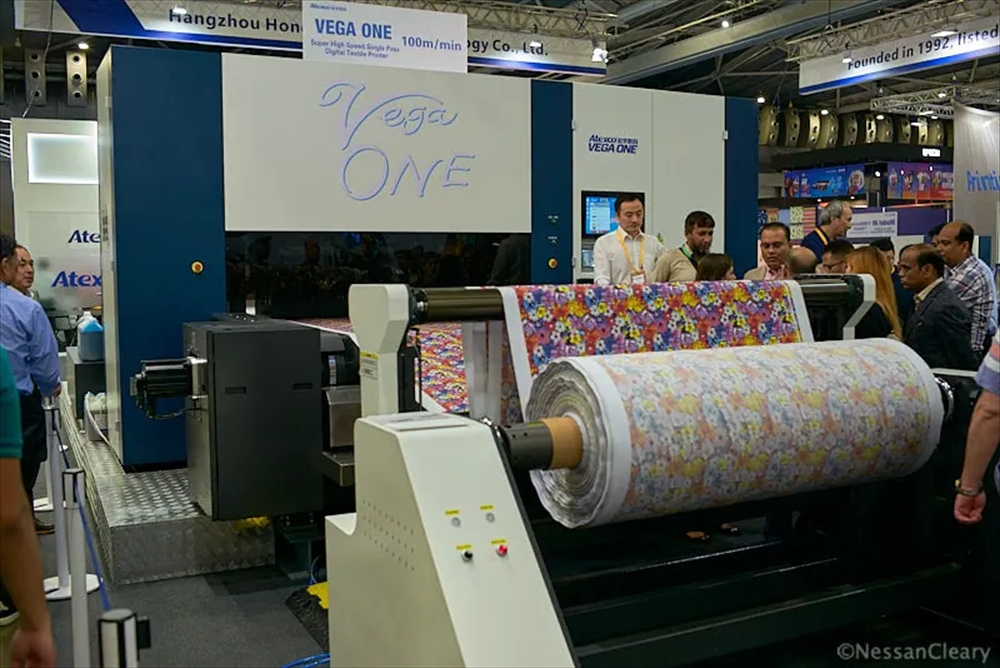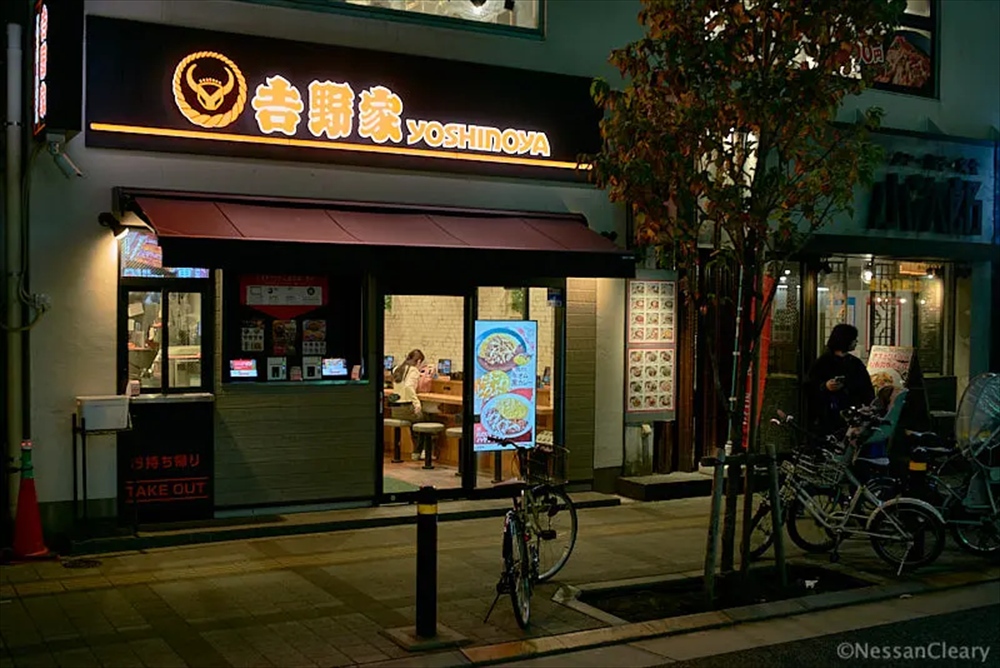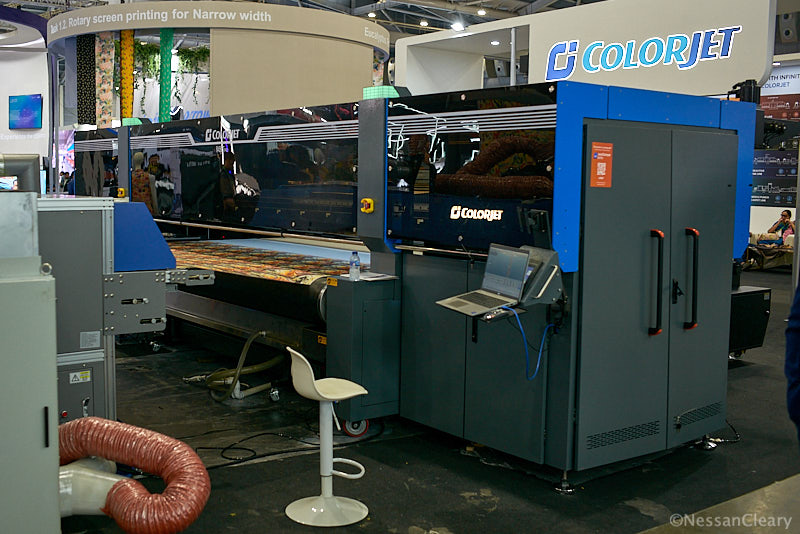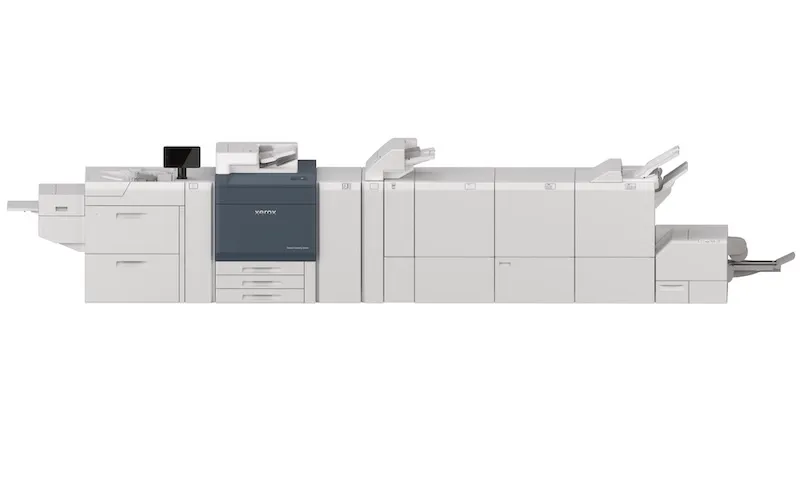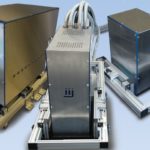- 2019-7-7
- Nessan Cleary 記事紹介
Kornitは正式に「プレスト」ロールフィード・テキスタイルプリンタを発売しました。これは前処理と後処理の両方の必要性をなくし、新しい Konnectクラウドベースの分析サービスと共に市場投入されます。
Kornit aims to simplify textile production
Kornit formally launched its Presto roll fed textile printer, which does away with the need for both pre- and post-treatment, as well as a new Konnect cloud-based analytics service.
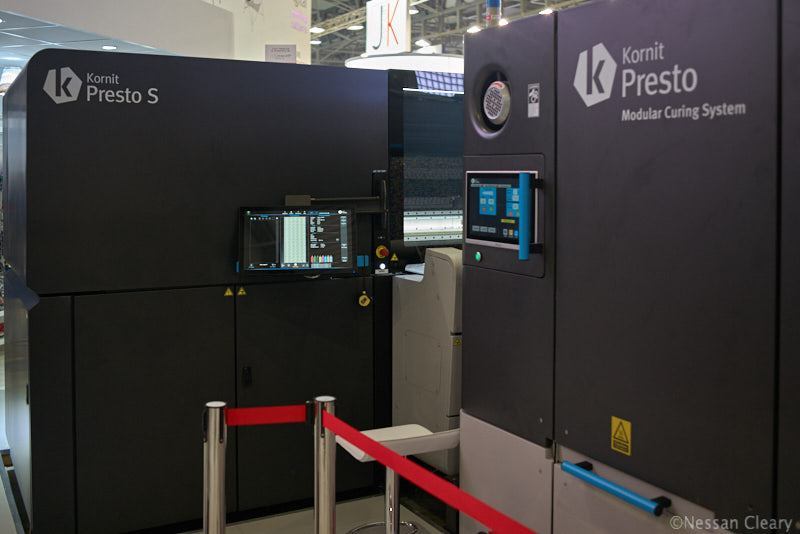
Kornit launched the Presto direct to fabric printer, seen here with its dedicated drying and curing unit.
Kornitは 2004年から Storm(という機種)を使ってかなりの長い旅を続けてきました。これにより、ユーザーは 2枚の Tシャツを並べて印刷することができます。それ以来、ほとんどのプリンタは同様のシャーシを使用してきましたが、特に同社がテキスタイル製造に関するプロセスの簡素化を模索していたため、インクの化学的性質に関して、プリントエンジンにかなりの変更を加えました。 2012年、Kornitは最初のロールツーロールモデルである Allegroを発表しました。これにより、対応可能なアプリケーションの範囲が広がりました。
Kornit has been on quite a journey, starting in 2004 with its Storm, which allows users to print two t-shirt sized garments side by side. Most of the printers since then have used a similar chassis but with considerable changes to the printing engine, particularly in terms of the ink chemistry as the company has sought to simplify the processes around textile production. In 2012 Kornit introduced its first roll to roll model, the Allegro, which expanded the range of applications it could address.
CEOの Ronen Samuelは、特にミレニアル世代の間で、一般的な欲求から始めて、個人的表現を追求する三つの主な傾向を特定します。彼は、「ファッションは日々変化しています」と指摘しています。しかし、それが第二のトレンドです – Eコマースにとって – それは本当に Kornitのような企業の成功を後押ししていることです。サミュエル氏は、次のように語っています。「たった5年前でさえ、貴方はネットで靴や衣服をオーダーしようとは思わなかったでしょう。何故なら、貴方はそれを最初に着る人になりたくなかったからです。でも今は簡単にネットオーダーしますよね。」
CEO Ronen Samuel identifies three main trends, starting with a general desire, particularly amongst the millennial generation for personal expression. He notes: “Fashion is changing on a daily basis.” But it’s the second trend – for ecommerce – that’s really driving the success of companies like Kornit. Samuel says: “Even five years ago you would not order your shoes or garments online because you would want to wear it first but now it’s very easy to order things online.”
Kornitのマーケティングおよび製品戦略担当副社長の Omer Kulkaは、2015年にアパレルが最大のオンラインショッピングカテゴリとしてエレクトロニクスに合格点をつけたと付け加え、「これは現在オンラインで最大のセグメントであり、最も急成長しており、これがトレンドであり続けるのです。」
Omer Kulka, Kornit’s vice president of marketing and product strategy, adds that apparel passed electronics as the largest online shopping category back in 2015, adding: “It’s now the largest segment online and the fastest growing and this is continuing to be the trend.”
サミュエルの 3番目のトレンドは持続可能性です。デジタル印刷は従来の生産よりも水の消費量が少ないという考えです。デジタル印刷に伴う汚染がはるかに少ないことは確かに本当ですが、生産量の増加が全体的な環境への影響にどのように影響を与えるか、または誰かがこの衣類をリサイクルするために積極的に取っているステップは明確ではありませんが、それは別の議論です。
The third of Samuel’s trends is sustainability, with the idea being that digital printing consumes less water than conventional production. It’s certainly true that there’s a lot less pollution involved in digital printing, but it’s not really clear how increased production is going to affect the overall environmental footprint, or what steps anyone is actively taking to recycle this clothing but that’s a discussion for another day.
Samuel氏によれば、これまで Kornitは市場を「カスタマイズされたデザインの市場」として利用してきたが、同社は少し大きい市場として、プロモーション用商品と、グッチ、アディダス、ザラ、H&Mを含むブランドやプライベートラベルが展開するもっと大きな分野に拡大したいと考えているとのことです。
Samuel says that up to now Kornit has exploited the market for customized designs, but that the company wants to expand into the slightly larger market for promotional goods, and the much bigger sector where brands and private labels play, which includes Gucci, Addidas, Zara and H&M
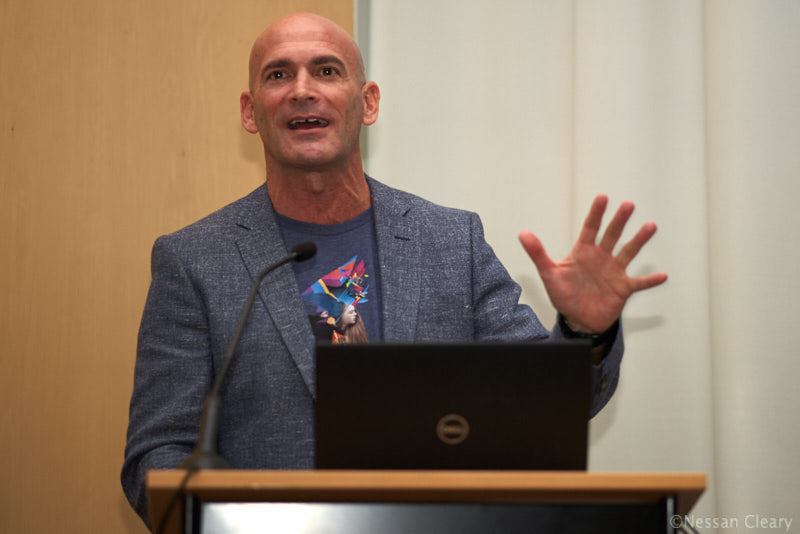
Ronen Samuel, CEO of Kornit, speaking at the company’s press conference at Itma 2019.
この目的のために、今年の初めに発表されてはいましたが、ITMAはダイレクト to ファブリックの「Presto」プリンタの商業的発売として記念されます。これは別の乾燥および硬化装置も備えた、幅 1.8mのロールツーロールプリンタで、印刷物をプリンタから仕上げ装置に転送するための粘着性ベルトを備えています。Kornitのファブリックマシンへの直接販売を担当する EMEAセールスマネージャーの Theo van Bruggen氏は、今はまだベータサイトにインストールされているものは一台だけですが、ITMA後に更に設置が増加するとのことです。
To this end, Itma marked the commercial launch of the direct to fabric Presto printer, though this was announced earlier this year. This is a 1.8m wide roll to roll printer that also includes a separate drying and curing unit, with a sticky belt to transfer the printed material from printer to finishing unit. For now there’s only one installed at a beta side though Theo van Bruggen, Kornit’s EMEA sales manager for direct to fabric machines, says that more are due to be installed straight after the show.
このプリンタは新しい Robustoインクセットを使用していますが、その鍵となるのは独自のプリントヘッドから噴射される水性の定着液です。Van Bruggen氏は、次のように説明しています。「ソフトウェアは定着液を色として認識するので、インクを配置する位置にのみ定着液を配置します。」そして彼は付け加えました。「すなわち、定着のレベルは色に依存するので、濃い色にはより多くの前処理液が必要となります。」これはウェットオンウェットプロセスで、定着剤がバインダーとして作用し、顔料インクを広げないように保持します。これにより、プレストは天然素材やニット素材を含むほぼすべての種類の布地に印刷することができますが、インクが布地の上に位置し、物理的に繊維に浸透しないことも意味します。
This printer uses a new Robusto inkset but the key to it lies in its water-based fixation solution, which is jetted through its own printheads. Van Bruggen explains: “The software recognises the fixation as a colour so it only puts the fixation where it puts the ink.” He adds: “Also, the level of fixation depends on the colour so that we need more pretreatment with darker colours.” It’s a wet on wet process with the fixation acting as a binder, holding the pigment ink to stop it from spreading. This allows the Presto to print to virtually any type of fabric, including natural and knitted materials, but it also means that the ink sits on top of the fabric and doesn’t physically penetrate into the fibres.
この化学的性質は、水分を蒸発させるために160℃で4分間熱風を循環させ、次いでインクを硬化させてインクを定着剤および布地への定着剤に結合させるように乾燥機によって補完されます。
This chemistry is complemented by the drier, which circulates hot air at 160°C for four minutes to vaporise the water content and then cures the ink so that chemical particles within the ink bond the ink to the fixation and the fixation to the fabric.
Prestoは 6色 – CMYKと赤と緑 – を持っていて、色ごとに三つのヘッドと定着剤用にもう三つを使っているので、全部で21色です(6x3+3)。ヘッド自体は Fujifilm Dimatix Starfire 1024です。最初のパスではキャリッジが左から右に移動し、定着剤とカラーの両方が出射され、リターンパスにはカラーだけが撃たれるスキャニングマシンです。
The Presto has six colours – CMYK plus red and green – and uses three heads per colour plus another three for the fixation, so 21 in total. The heads themselves are Fujifilm Dimatix Starfire 1024. It’s a scanning machine, with the carriage moving left to right, laying down both fixation and colours in the first pass, with just the colours on the return pass
Itmaのスタンドに設置されている機械は Presto Sで、ヘッドの数は 2倍の 42個になっています。最大速度は 450平米/時ですが、Kulkaはベータサイトでは販売可能な品質で 300平米/時間と言っています。これは 600 x 800 dpiの解像度を意味しますが、はるかに遅い速度ではありますが、プリンターは 1000 x 800 dpiを達成できます。別の色を追加するスペースもあり、van Bruggenはネオンカラーは数週間以内に発売されると述べています。
The machine on the stand at Itma was the Presto S, which has double the number of heads at 42. The maximum speed is 450 sqm/hr though Kulka says that the beta site is achieving 300 sqm/hr at a sellable quality. This would mean 600 x 800 dpi resolution though the printer can achieve 1000 x 800 dpi, albeit at much slower speeds. There’s also space on the carriage for another colour to be added and van Bruggen says that neon colours will be available within a few weeks.
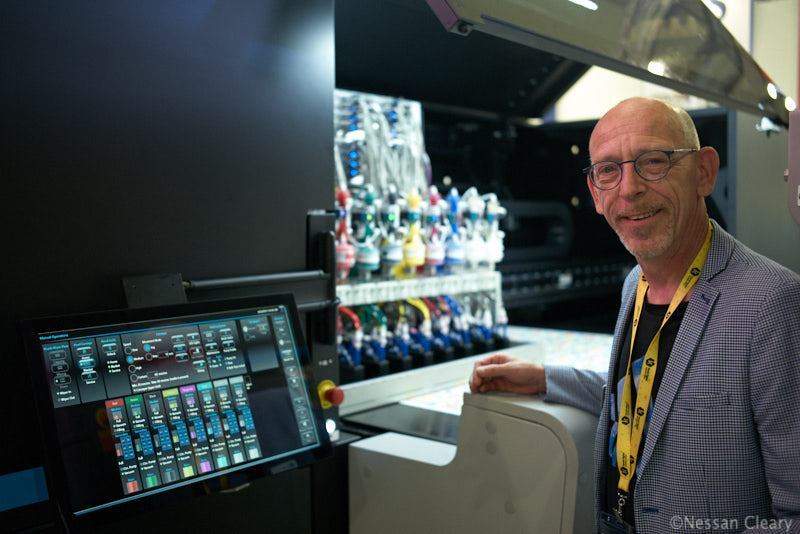
Theo van Bruggen, Kornit’s EMEA sales manager for direct to fabric, showing the Presto S at Itma 2019.
Kulka氏はまた、粘着ベルトを強調し、次のように述べています。「すべてのシステムに粘着ベルトがあり、これらのベルトは洗浄する必要があります。クローズドループシステムを採用しているため、数週間ごとに水を交換するだけで済みます。」
Kulka also highlighted the sticky belt, saying: “Every system has a sticky belt and these belts need to be washed. We have a closed loop system so we only have to replace the water every few weeks.”
価格は55万ユーロ(66百万円@120円/€)からで、ファッションと住宅装飾市場をターゲットにしています。計画は、プレストが最終的にアレグロを置き換えることになっているようで、Kulka氏は:「それはより多くの機会を開く」と述べています。私はこれが Kornitの成功であることにほぼ疑いはありません。同社は極端なショートランでオンデマンドの市場に集中して集中しており、関与するプロセス数を最小限に抑えるために一生懸命取り組んできました。Prestoの前処理なしで任意の布地にプリントする機能は便利ですが、それ以上の洗浄、スチーム処理、またはその他の違いを生じさせるプロセスを必要とせずに、プリントを硬化ユニットから直接取り出すことができることは大きな差別化となるでしょう。
It’s aimed at the fashion and home decor markets with the price starting at €550,000. The plan is that the Presto will eventually replace the Allegro with Kulka noting: “It opens up more opportunities.” I’ve little doubt that this will prove to be a success for Kornit. The company has been extremely focussed, concentrating on the very short run and on-demand markets, and has worked hard to minimise the number of processes involved. The Presto’s ability to print to any fabric without pre-treatment is useful, but it’s the ability to take the prints straight out of the curing unit without requiring any further washing, steaming or other processes that will really make the difference.
Presto以外に、Kornitは新しいクラウドベースのシステムである Konnectも発表しました。これにより、顧客は生産を監視し、各ジョブのコストを確認できます。今のところ、Kornit Konnectには、データ駆動型ベンチマーク、実際の製造コスト、およびジョブごとのコスト構造を備えたフリート管理ダッシュボードがあります。しかし、その意図は、生産管理を最適化するためのより深い洞察を可能にするためにこれをベースにすることです。
Besides the Presto, Kornit also announced a new cloud-based system, Konnect, which allows customers to monitor their production and to see the costs for each job. For now, Kornit Konnect includes a fleet management dashboard with data driven benchmarks, actual production costs, and cost structures per job. But the intention is to build on this to enable deeper insights to optimize production management.
Kulka氏は、繊維産業というのは実際にはデータ主導型ではなく、これにはいくつかの真実があると言っていますが、Durstや HPなど、データサービスも提供しているベンダが他にあることは注目に値します。グラフィックスの世界ではデータ分析への明確な傾向があり、私はこれがもっと捺染市場でも起きることを期待しています。
Kulka says that the textile industry is not really data driven and there is some truth in this, though it’s worth noting that there are other vendors, such as Durst and HP, that also offer data services. There’s a definite trend in the graphics world toward data analytics and I would expect to see more of this in the textile printing market.
Kornitは、今年初めに発表された Atlasと Avalanche Poly Proシステムも披露しました。 Adidasはこれらのマシンの両方に投資し、Kornitと協力して、衣料品への直接販売を拡大しています。これを強調するために、KornitはショーのスタンドでこれらのプリンターにいくつかのAddidasデザインを印刷しました。
Kornit also showed off its Atlas and the Avalanche Poly Pro systems, which were introduced earlier this year. Adidas has invested in both of these machines and is working with Kornit to help expand its own direct to garment offerings. To underscore this, Kornit printed several Addidas designs on these printers on the stand at the show.
Kornitの詳細については、 www.kornit.comを参照してください。
You can find more details on Kornit at www.kornit.com.



